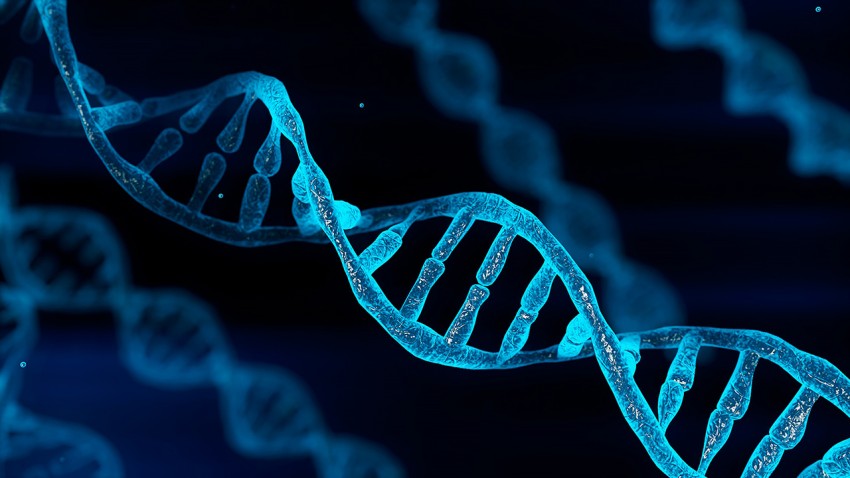News
Background Haploinsufficiency of the progranulin (PGRN) protein is a leading cause of frontotemporal lobar degeneration (FTLD). Mouse models have been developed to study PGRN functions. However, PGRN deficiency in the commonly used C57BL/6 mouse strain background leads to very mild phenotypes, and pathways regulating PGRN deficiency phenotypes remain to be elucidated. Methods We generated PGRN-deficient mice in the FVB/N background and compared PGRN deficiency phenotypes between C57BL/6 and FVB/N backgrounds via immunostaining, western blot, RNA-seq, and proteomics approaches. We demonstrated a novel pathway in modifying PGRN deficiency phenotypes using inhibitor treatment and AAV-mediated overexpression in mouse models. Results We report that PGRN loss in the FVB/N mouse strain results...
How does a tomato plant decide if it’s warm enough to bear fruit? What causes basil to bolt and rush to produce flowers when the weather gets hot? Do we really understand how plants sense temperature? For decades, researchers searched for a single “thermosensor”—a biological thermometer buried deep in the plant’s molecular machinery. But a new theory is flipping that idea on its head. A growing number of studies suggest that plants don’t have one master sensor, according to Avilash Singh Yadav, postdoctoral associate with Adrienne Roeder, professor at the Weill Institute for Cell and Molecular Biology, and the Cornell College of Agriculture and Life Sciences School of Integrative Plant Science, Plant Biology Section. “What we realize is that temperature sensing in...
Beth Ryan, Baskin Lab graduate student, has been selected to attend the 2025 Lindau Nobel Laureate Meeting in Germany, where she will join top young scientists from around the world to engage with over 30 Nobel laureates in chemistry through lectures, discussions, and collaborative...
TMEM106B, a type II transmembrane protein localized on the lysosomal membrane, has been identified as a central player in neurodegeneration and brain aging during the past decade. TMEM106B variants that increase TMEM106B expression levels are linked to several neurodegenerative diseases, including frontotemporal lobar degeneration (FTLD). Additionally, the C-terminal lumenal fragment of TMEM106B was recently shown to form amyloid fibrils during aging and neurodegeneration. However, the mechanisms regulating TMEM106B levels are not well understood. Here we show that TMEM106B is myristoylated by NMT1/2 enzymes at its glycine 2 α-amino group and its lysine 3 ε-amino group. Myristoylation decreases TMEM106B levels by promoting its lysosomal degradation. Furthermore, we demonstrate that...
Marcus Smolka, professor of molecular biology and genetics in the College of Agriculture and Life Sciences (CALS), has been named an associate vice provost in Research & Innovation. His two-year appointment began May 1. Smolka succeeds Hector Aguilar-Carreño, professor in the Department of Microbiology and Immunology in the College of Veterinary Medicine, who served in the role from July 2024 through April...
Flowers grow stems, leaves and petals in a perfect pattern again and again. Even in this precise, patterned formation in plants, gene activity inside individual cells is far more chaotic than it appears from the outside.This finding has important implications for plant engineering, where scientists design artificial gene switches to control growth or behavior. Understanding how plants manage genetic “noise” could also inform research in other fields, from synthetic biology, where predictability is crucial, to research on cancer, where random gene activity can drive tumor...
“There was a time my roommate asked, ‘Why are you spending so much time in the lab?’ And that really hit me,” said Yanru Liu, a graduate researcher at Cornell’s Weill Institute for Cell & Molecular Biology. “I realized I need to explain my work to more people. It’s not just scientists doing their own thing—what we’re doing matters to everyone.” Graduate students, like Liu, play a central role in advancing research—designing experiments, analyzing data, and assisting or even leading discoveries at the cutting edge of their fields. At the same time, they serve as teaching assistants, mentors, and instructors, helping to educate and support undergraduate students across disciplines. At Cornell, Liu has enjoyed wearing these many...
Tobias Doerr has been awarded $50,000 for research on how interactions between the immune system and bacterial stress responses influence infection outcomes. His project, conducted with Brian Lazzaro, uses fruit flies and Enterobacter cloacae to explore how the body’s natural defenses and bacterial survival strategies affect disease progression, with the goal of improving treatment for bacterial...
Cells display striking stochasticity in gene expression, which plays an important role in development, disease, and regeneration. Previous studies have found stochastic gene expression in bacteria, yeast, and from constitutive promoters in Arabidopsis. However, most promoters are non-constitutive. Stochastic gene expression from non-constitutive promoters in a multicellular organism, especially those with key developmental roles, remains largely uncharacterized. Here, we report stochastic expression of auxin responsive genes in the Arabidopsis floral meristem, using promoter reporters of DR5, ARABIDOPSIS HISTIDINE PHOSPHOTRANSFER PROTEIN6 (AHP6), and DNA BINDING WITH ONE FINGER5.8(DOF5.8). We find highly variable DR5 expression patterns among younger meristems. Such variability is largely...
The award is the highest honor bestowed on students by SUNY and recognizes individuals who have demonstrated exceptional achievement across a range of areas, including academics, leadership and community service. Esha Shakthy ’24 (CHE), of Cary, North Carolina, graduated in December 2024 with a degree in nutritional sciences. A Hunter R. Rawlings III Cornell Presidential Research Scholar and Bronfenbrenner Center for Translational Research Scholar, she has contributed to research in a variety of settings, including the Lammerding Lab, Mehta Research Group, Cutler Botanic Gardens in Broome County and Cornell Undergraduate Research Journal. A crew-chief-in-training with Cornell University Emergency Medical Service, she has served over 1,000 hours and holds classes as a certified CPR...
As part of EYH, CROPPS trainee and doctoral student in plant biology Michelle Heeney hosted a workshop on biologically inspired engineering using plants with the lab of Adrienne Roeder, professor at the the Weill Institute for Cell and Molecular Biology and the Section of Plant Biology in the School of Integrative Plant Science. The workshop also tackled a common but often overlooked issue in science education: plant blindness—the tendency to overlook plants in our environment and underestimate their importance. “When we teach students to see the patterns in plants and draw on them for inspiration, we’re not just curing plant blindness—we’re inviting them to open a lifelong dialogue with the natural world surrounding them,” Heeney said. CROPPS trainees at EYH included...
Dr. Adrienne Roeder joins worldwide colleagues in this commentary in The Plant Cell. Over the past 40 years, Arabidopsis has emerged as the most powerful and versatile plant model to uncover core biological principles and served as a prototyping system to test advanced molecular and genetic concepts. The authors argue that the emerging challenges of accelerating climate instability and a rapidly growing global population call for renewed and robust investments in fundamental plant biology research. Leveraging the power of Arabidopsis research, resources, datasets, and global, collaborative community is more important than ever. This commentary lays out a vigorous defense of foundational, i.e., “basic”, plant science research; describes that often, Arabidopsis is preferable to...
A team of researchers at Cornell University have made a discovery in fruit flies that could change the way we understand brain diseases like Alzheimer’s and Parkinson’s in humans. The scientists found that Eato—a fruit-fly protein whose counterparts in mammals were already known for helping brain cells get rid of harmful fats—actually has a much bigger job. It not only protects neurons (brain cells), from being destroyed, but also increases the efficiency by which other cells, called phagocytes, clean up damaged neurons. The researchers used Drosophila fruit flies, which are commonly used in experiments because they have many of the same basic biological processes as...
Congratulations, Byron! Byron Rusnak is a graduate student with Adrienne Roeder. Byron uses imaging and genetic techniques to measure the cellular signaling and growth patterns that lead to the precise and coordinated development of plant sepals. The Barbara McClintock Graduate Student Award is made possible by an endowment from Dr. Robert Rabson to honor outstanding senior graduate students studying in the Plant Sciences (Plant Biology, Plant Pathology & Plant-Microbe Biology, Plant Breeding, Horticulture or Soil & Crop Sciences) at Cornell. It is awarded annually and students are selected based on their academic, research, teaching, and outreach achievements as well as on their potential to continue an outstanding career in the Plant...
Karisa Bockley, a BME undergraduate student in the Lammerding Lab, was recognized by the Cornell Engineering Alumni Association with their 2025 Undergraduate Research Award. This award includes $1,000 towards further research. In addition, Karisa just published a co-first author publication (‘micro-publication’) with her mentor: Filamin A interacting protein 1-like (FILIP1L) has mitochondrial localization. Read the full article here: DOI 10.17912/micropub.biology.001572 Congratulations,...
As an undergraduate researcher in the Dörr Lab, Zoe Tarun ’25 investigates how bacteria construct and maintain a healthy cell envelope, and how they resist being killed by antibiotics. Coming to Cornell from a rural background, Zoe had limited experience in lab research but was eager to get involved. After meeting Professor Tobias Dörr in his microbiology class, she was invited to join his lab. That opportunity marked a turning point and led to one of the most meaningful mentorships of her college...
Researchers have identified a new way to fight infections like Lyme disease and syphilis by disrupting bacterial motility, preventing their spread through the body. The findings could have wide-ranging impacts on the treatment of infections in the future as concern about antibiotic-resistant strains grows. This research was conducted by members of the Weill Institute’s Crane lab as well as collaborators at West Virginia University and Virginia Commonwealth University, and was published in the journal ACS Chemical...
A study from Yu Lab researchers in the Weill Institute for Cell and Molecular Biology at Cornell University could enable a quantum leap forward in identifying and deciphering cancer-driving genetic mutations, the first step in developing effective...
Filamin A interacting protein 1-like (FILIP1L) is a multifunctional protein that plays a role in cancer progression, apoptosis, and angiogenesis. However, FILIP1L remains a relatively underexplored protein, and many of FILIP1L’s key mechanisms and interacting partners are still unknown. Using immunofluorescence staining for endogenous FILIP1L and high-resolution confocal microscopy, we show that FILIP1L colocalizes with the mitochondrial marker, TOM20, suggesting a novel connection between FILIP1L and mitochondria. Further exploring the relationship between FILIP1L and mitochondria might provide a deeper understanding of the emerging function of FILIP1L in health and...
Beth Ryan, a Chemistry and Chemical Biology graduate student in the Weill Institute’s Baskin Lab, has been chosen as a Young Scientist invited to attend the 74th Lindau Nobel Laureate Meeting on Chemistry, this June 2025. Nobel Laureates in Chemistry and 600 highly talented Young Scientists from around the world will come together in Lindau, Germany, for a unique week of scientific exchange, inspiration, and networking, during lectures, panel discussions, and small-size discussion sessions. Beth shared her enthusiasm and gratitude on earning this prestigious recognition: “I am incredibly excited to be selected to attend this year’s Lindau Nobel Laureate Meeting in Chemistry. It is such a unique opportunity,” she said. “There is really no other situation...




















